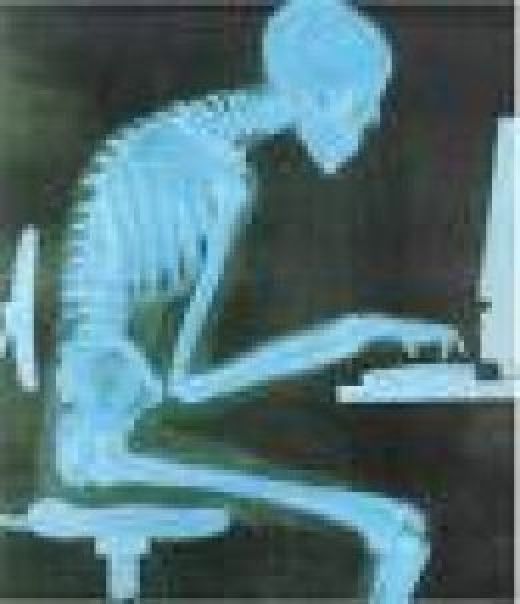Posted November 30, 2010
Fast-Tracking Your Training: The Joint-by-Joint Approach
Let’s say you’re one of the 250 million North Americans who spends most of their day sitting in front of a computer or a television (not saying you are, but the odds are stacked against it). From this, we could say that the sitting posture has caused some changes in how your body works, from your posture to your walk to what muscles are stiff and tight and what muscles are stretched and weak.

Now imagine there was a way for you to correct pretty much every muscle imbalance within your body by using a simple algorithm that could pretty much guide your training and put it on autopilot? Sounds pretty sweet, doesn’t it?
In a previous post where I interviewed Tony Gentilcore, he mentioned a breakdown of a Joint-by-Joint approach to training, popularized by Michael Boyle and Gray Cook. The way this approach works is that the body is essentially a loosely stacked series of joints that are held by soft tissue that allows for movement from some joints to a high degree, with less movement coming from other joints. Imagine a skeleton hanging in a classroom. Take it off the hanger, and it will fall to the floor in a heap pretty quickly!! The joints of the body alternate between needing high amounts of stability with high amounts of mobility. Stability is the concept of having a joint maintain its position without being easily deformed by external forces (gravity, resistance, etc), whereas mobility means the joint can go through a full range of motion, with or without external loads. The series alternates like this:
Joint—Primary Need
Ankle—Mobility
Knee—Stability
Hip—Mobility (multi-planar)
Lumbar Spine—Stability
Thoracic Spine—Mobility
Shoulder blade—Stability
Shoulder joint—Mobility
Cervical Spine – Stability
C1 – C2 – mobility
With this algorithm, we can then design a program to correct pretty much every imbalance in the body.
Let’s say we have someone with low back pain. Typically it’s because they have reduced muscle support in the area, coupled with reduced hip musculature and mobility, which means the majority of mobility has to come from the lumbar spine. Dr. Stuart McGill put out an amazing book called Low Back Disorders, and showed that the lumbar vertebrae are only supposed to move about 13-14 degrees in flexion-extension each but only about 2 degrees of rotation, whereas the thoracic spine can move roughly the same flexion-extension but can twist between 4-9 degrees each. If we start moving through our lumbar spine instead of the thoracic spine, we run the risk of injury.
Think about any dancers or gymnasts you might have seen with crazy mobility in their spines.
Wait, what was I talking about? Oh yeah, flexibility. Right. It’s…..um……..
Sorry. Flexibility.
These are the people with crazy mobility where mobility shouldn’t be, and tend to have the absolute crappiest low backs and are typically in pain as a result.
Another example would be knees. They’re supposed to be the stable joints of the leg, with mobility coming from the ankle and the hip, but all too often we see knee injuries resulting from shoddy movement of the hips and ankles.
So how do we fix this? Let’s look at the original algorithm, but add a new level to it:
Joint—Primary Need – How to Train
Ankle—Mobility – mobility drills
Knee—Stability – Balance drills
Hip—Mobility (multi-planar) – Mobility Drills
Lumbar Spine—Stability – Stability Drills
Thoracic Spine—Mobility – Mobility Drills
Shoulder blade—Stability – Stability Drills
Shoulder joint—Mobility – Mobility Drills
Cervical Spine – Stability – stability Drills
C1-C2 – mobility – Mobility Drills
This can make your workouts pretty specifically tailored. Warmup with mobility drills, workout with stability drills, and finish with strength work and metabolic conditioning.
Here’s a few mobility drills that can help out:
ARVE Error: need id and provider
A great move to increase frontal plane mobility in the hips while stabilizing the lumbar spine.
ARVE Error: need id and provider
Excellent warm-up for getting the pelvis moving without incorporating the spine in hip flexion and extension movements. This is a fantastic spine-saving exercise
ARVE Error: need id and provider
I’ve shown this one before, and it’s still one of my favorites. Nothing trains the squat pattern better, and it only takes a small amount of weight to make you feel like you’re going to puke in your face and shoot your ass across the room and take out someone’s eye with it.
And just to balance it out, here’s some stability exercises:
ARVE Error: need id and provider
Excellent series on building scapular stability, plus the sexiest use of a grey Under Armour tee this side of the Mississippi.
ARVE Error: need id and provider
Great core stabilization exercise, and way harder than it looks, especially if you try to maintain a neutral pelvis with no side to side rocking or rolling.
ARVE Error: need id and provider
No better way to show off than to grab a big dumbell and squat like a king with the thing. Great hip and ankle mobilizer, while also promoting spinal stability and scapular stability. The total package!!
The concept of training Joint-by-Joint is an evolution from the Movement-based training philosophy, which said that by training the movement the body would work properly. But let’s say someone has chronically tight ankles and they can’t do a proper squat without sticking their butts way out and not getting any dorsiflexion. How is this going to help them out?? They will need to get their ankles moving well before they can actually get their squat pattern working properly.
If you’ve never read Mike Boyle’s book
Advances in Functional Conditioning, you need to. This is essentially the bible for any serious strength and conditioning coach who wants to stay in the forefront of the knowledge base out there. And as anyone knows, knowledge is dead sexy.
[gravityform id="3" name="Blog Post Capture. " title="false"]



3 Responses to Fast-Tracking Your Training: The Joint-by-Joint Approach